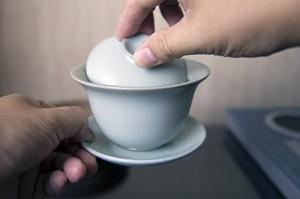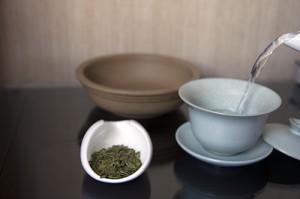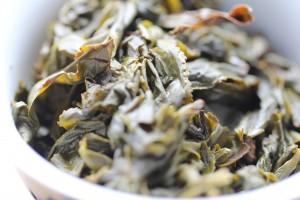On this site, I have made no attempt to conceal my love for a gaiwan. It is the most versatile vessel- suited to brew all types of teas- and is the best for trying out new teas as it adds or detracts nothing from the characteristic of the tea, presenting a ‘true and fair view’ of the tea.
For all the articles I have written on a gaiwan, thus far it’s merely focused on the gaiwan as how Southern Chinese (and those of southern Chinese descent like us) use it: as a brewing vessel in gongfu tea.
This article will describe the use of a gaiwan, the way northern Chinese and those in south western China (Chengdu and part of Yunnan) use it- as a drinking vessel or ‘gaiwancha’ (盖碗茶).
Background

A gaiwan is also known as a ‘3 Talent Cup’ (三才杯) consisting of a lid, a saucer and a known which are known as ‘Heaven’, ‘Earth’ and ‘Man’ (天地人).
If you are using a gaiwan as a drinking vessel, it is considered bad manners to separate the 3 components- since the 3 elements of ‘Heaven’, ‘Earth’ and ‘Man’ are considered indispensable to the success of any venture.
From a practical angle, the saucer is used to lift the bowl- providing insulation against the heat. The lid has 2 main purposes- heat retention and to ‘push back’ the tea leaves while you are drinking from the bowl.
How to Drink from a Gaiwan
The basic steps in brewing tea with the gaiwancha method is similar to glass brewing
Using Longjing as an example- the steps are

2) Add tea leaves
3) Fill the cup to about 70% of hot water
4) Cover the lid partially
5) After infusing for 1-2 minutes, the tea is served
6) After consuming about 2/3 of the tea, the cup is re-filled
7) This is repeated until the brewed tea no longer has any taste
Notes on Drinking from a Gaiwan
Unlike using a gaiwan as a ‘pure brewing vessel’, gaiwancha is not suited for all types of teas.

Generally, this is most commonly used for green tea, scented tea and to a lesser extent, black tea.
On the selection of a gaiwan, I feel that a taller gaiwan would be more suited for gaiwancha since the height would channel the aroma upwards. Especially since oolong teas are not used, there is no need for a wider gaiwan as described here.
Material wise, white porcelain is generally hard to go wrong since it’s better for observing the liquor. Alternatively glass works well too but the shape of the lid should be concaved. This is because glass is a good conductor of heat, an air pocket would be needed to insulate the lid otherwise it’s too hot to hold. A glass gaiwan would enable the drinker to observe the beauty of the leaves unfurling and also for the server to know when to refill the tea.
In terms of size, it should be bigger than what is normally used for brewing tea. Considering only about 2/3 of the vessel is consumed each time, ~150-200ml would probably be more appropriate than the sub 100ml vessels used in gongfu tea.
Like glass brewing, gaiwancha is a very simplistic, unpretentious way of drinking tea with no need for elaborate equipment. This in my opinion is part of the allure of gaiwancha, a very practical, no-frills approach to drinking tea, allowing tea to form part of our daily life.
See more articles related to brewing tea
